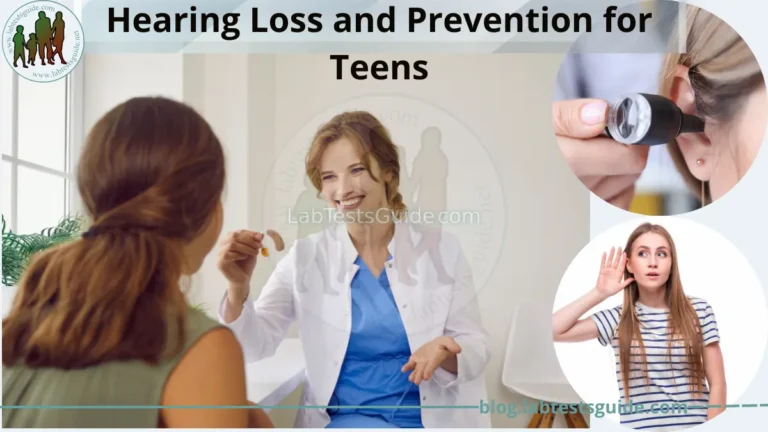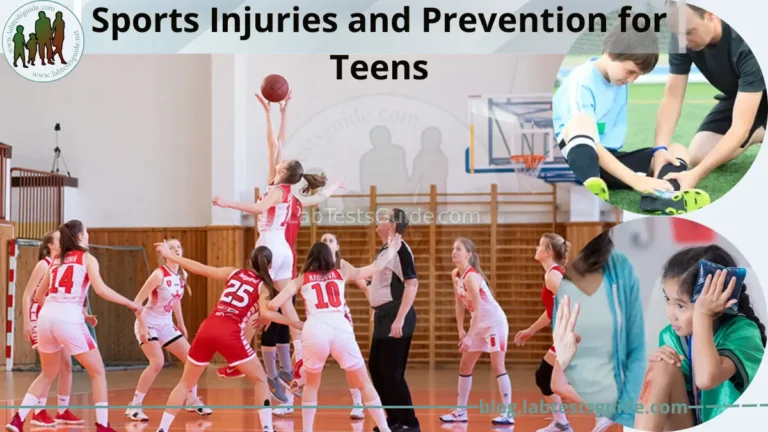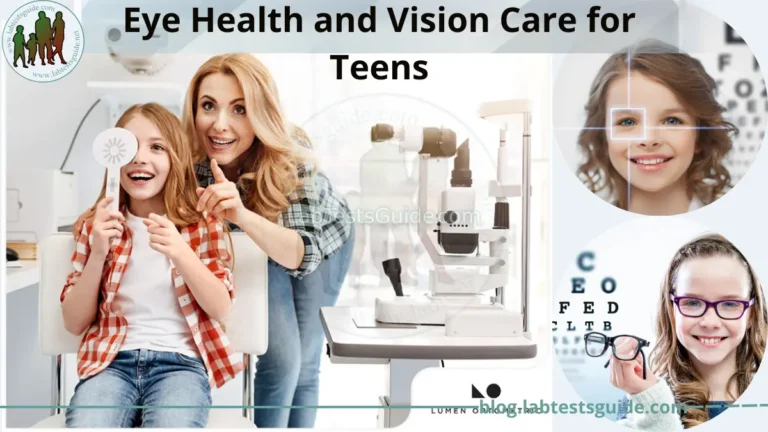Eating disorders are serious mental health conditions characterized by disturbances in eating behaviors and a preoccupation with body weight, shape, and appearance. These disorders can have significant physical, emotional, and psychological consequences, particularly among teenagers. This section provides an overview of eating disorders among teens, including their definition, prevalence, and impact on teens’ health.

Definition of Eating Disorders
Eating disorders encompass a range of conditions, including anorexia nervosa, bulimia nervosa, binge eating disorder, and other specified feeding or eating disorders (OSFED). These disorders involve abnormal eating patterns, extreme concerns about body weight, and a distorted perception of body image.
Prevalence of Eating Disorders Among Teens
Eating disorders are most commonly developed during adolescence, with a peak onset occurring between the ages of 14 and 18. The prevalence of eating disorders among teens varies, but research suggests that they affect a significant number of adolescents, both males and females, across different cultures and socioeconomic backgrounds.
Impact of Eating Disorders on Teens’ Health:
Eating disorders can have severe consequences on teens’ physical health, leading to malnutrition, organ damage, hormonal imbalances, and growth impairments. They also have a profound impact on teens’ emotional well-being, contributing to depression, anxiety, social withdrawal, and low self-esteem. Without proper treatment, eating disorders can be life-threatening.
The following sections will delve deeper into the types of eating disorders, their causes and risk factors, warning signs and symptoms, diagnosis and assessment methods, treatment approaches, prevention strategies, challenges in treatment, and available support for teens and their families.
Types of Eating Disorders:
The different types is crucial for recognizing and addressing eating disorders among teens.
- Anorexia Nervosa: Anorexia nervosa is characterized by an intense fear of gaining weight or becoming fat, leading to severe food restriction and significant weight loss. Individuals with anorexia may have a distorted body image, seeing themselves as overweight despite being underweight. They often exhibit obsessive behaviors related to food, excessive exercise, and rigid dieting.
- Bulimia Nervosa: Bulimia nervosa involves recurrent episodes of binge eating, followed by compensatory behaviors to avoid weight gain, such as self-induced vomiting, excessive exercise, or the misuse of laxatives or diuretics. Individuals with bulimia often experience a lack of control during binge episodes and have a preoccupation with body shape and weight.
- Binge Eating Disorder: Binge eating disorder (BED) is characterized by recurrent episodes of consuming large quantities of food within a discrete period, accompanied by a sense of loss of control. Unlike bulimia, individuals with BED do not engage in compensatory behaviors. They may experience feelings of guilt, shame, and distress related to their eating patterns.
- Other Specified Feeding or Eating Disorders (OSFED): OSFED, formerly known as Eating Disorder Not Otherwise Specified (EDNOS), includes a range of eating disorders that do not meet the full criteria for anorexia, bulimia, or binge eating disorder. It encompasses conditions such as atypical anorexia nervosa, purging disorder, and night eating syndrome. Individuals with OSFED may exhibit disordered eating behaviors and significant distress but may not meet specific diagnostic criteria for the other eating disorder categories.
It is important to note that these categories are not mutually exclusive, and individuals may experience a combination of symptoms from different types of eating disorders. Seeking professional help is crucial for accurate diagnosis and tailored treatment planning for each individual’s unique needs.
Causes and Risk Factors:
following are some common factors that contribute to their development.
Biological Factors
- Genetics: There is evidence of a genetic predisposition to eating disorders, as they tend to run in families. Certain genes may contribute to the risk of developing an eating disorder, although specific genes have not been identified conclusively.
- Neurochemical imbalances: Imbalances in neurotransmitters like serotonin, dopamine, and norepinephrine, which regulate mood and appetite, may play a role in the development of eating disorders.
Psychological Factors
- Body image dissatisfaction: Poor body image and a distorted perception of body shape and weight can contribute to the development of eating disorders.
- Low self-esteem: Individuals with low self-esteem or perfectionistic tendencies may be more susceptible to developing eating disorders.
- Emotional factors: Psychological issues like anxiety, depression, trauma, and difficulties in coping with emotions and stress can contribute to the development of disordered eating patterns
Sociocultural Factors
- Societal pressures: Media, cultural ideals, and societal emphasis on thinness and appearance can significantly influence body image dissatisfaction and disordered eating behaviors.
- Peer influence: Teens may feel pressure to conform to peers’ body standards or engage in unhealthy dieting behaviors as a means of fitting in.
- Sports and performing arts: Certain sports or activities that prioritize thinness or have weight requirements, such as dance, gymnastics, or wrestling, can contribute to the development of eating disorders among teens involved in these activities.
Family Dynamics
- Family history: Having a family member with an eating disorder or a history of other mental health conditions can increase the risk for an individual.
- Family environment: Family dynamics, including a preoccupation with weight and appearance, overemphasis on thinness, dieting behaviors, or a history of disordered eating within the family, can contribute to the development of eating disorders in teens.
It is important to note that these factors interact differently for each individual, and not all individuals with risk factors will develop an eating disorder. Eating disorders are complex conditions influenced by a combination of multiple factors, and a comprehensive understanding of these factors can help inform prevention and treatment approaches.
Warning Signs and Symptoms:
following signs persistently, it is advisable to seek professional help for further assessment.
Physical Symptoms:
- Significant weight loss or fluctuations
- Extreme thinness or emaciation
- Fatigue and weakness
- Dizziness or fainting
- Cold intolerance or feeling cold all the time
- Irregular or absent menstrual periods (in females)
- Dry skin and brittle nails
- Development of fine hair on the body (lanugo)
- Swelling of the cheeks or jaw (due to salivary gland enlargement from purging behaviors)
Behavioral and Emotional Symptoms:
- Preoccupation with food, calories, and dieting
- Frequent avoidance of meals or making excuses to avoid eating
- Obsessive or rigid exercise routines, even when injured or unwell
- Frequent trips to the bathroom after meals (indicating purging behaviors)
- Hoarding or hiding food
- Social withdrawal or isolation
- Mood swings, irritability, or anxiety
- Heightened sensitivity to comments about body weight or appearance
- Avoidance of social events involving food
Cognitive Symptoms:
- Distorted body image (perceiving oneself as overweight despite being underweight)
- Excessive self-criticism related to body shape and weight
- Perfectionism or rigid thinking patterns
- Overvaluation of thinness as a measure of self-worth
- Decreased concentration or difficulties with memory
If you observe these signs in a teenager, it is important to approach them with empathy and concern. Encourage open communication and express your support. Encouraging the individual to seek professional help from a healthcare provider or mental health specialist experienced in treating eating disorders is essential for proper diagnosis and appropriate intervention.
Diagnosis and Assessment:
following are key components of the diagnostic and assessment process.
Medical Evaluation
- Physical examination: A thorough physical examination helps assess the individual’s overall health, including weight, vital signs, and any physical complications related to the eating disorder.
- Laboratory tests: Blood tests may be conducted to assess nutritional deficiencies, electrolyte imbalances, hormonal abnormalities, and other potential medical complications associated with the eating disorder.
Psychological Assessment:
- Clinical interview: A healthcare professional will conduct a comprehensive interview to gather information about the individual’s eating behaviors, body image concerns, emotional well-being, and other psychological factors.
- Psychological questionnaires or assessments: Standardized questionnaires may be used to assess the severity of eating disorder symptoms, body image dissatisfaction, and psychological distress.
Diagnostic Criteria:
- Diagnostic and Statistical Manual of Mental Disorders (DSM-5): The DSM-5 provides specific diagnostic criteria for different eating disorders, including anorexia nervosa, bulimia nervosa, binge eating disorder, and other specified feeding or eating disorders (OSFED). Healthcare professionals will use these criteria to determine if the individual meets the criteria for a specific eating disorder.
It is important to involve healthcare professionals experienced in treating eating disorders, such as physicians, psychiatrists, psychologists, or eating disorder specialists, for an accurate diagnosis and appropriate treatment planning. Early detection and intervention significantly improve the chances of successful recovery. If you suspect an eating disorder in a teen, encourage them to seek professional help from a qualified healthcare provider.
Treatment Approaches:
The following are common treatment approaches for eating disorders.
Medical Treatment:
- Restoring and stabilizing physical health: This may involve medical monitoring, nutritional rehabilitation, and addressing any medical complications associated with the eating disorder.
- Medication: In some cases, medication may be prescribed to manage co-occurring conditions like depression, anxiety, or obsessive-compulsive disorder.
Psychotherapy
- Cognitive-Behavioral Therapy (CBT): CBT helps individuals identify and modify distorted thoughts and beliefs related to food, body image, and self-esteem. It also focuses on developing healthy coping strategies and behavioral changes.
- Family-Based Treatment (FBT): FBT involves the active involvement of parents or caregivers in the treatment process. It helps restore healthy eating habits and addresses family dynamics that may contribute to the eating disorder.
- Dialectical Behavior Therapy (DBT): DBT combines elements of CBT with skills training in emotion regulation, distress tolerance, and interpersonal effectiveness.
- Interpersonal Therapy (IPT): IPT focuses on improving interpersonal relationships and addressing any interpersonal issues that may contribute to the eating disorder.
Nutritional Counseling
- Working with a registered dietitian: A dietitian can help develop a balanced meal plan, provide education on nutrition, and support the individual in developing a healthy relationship with food.
Support Groups and Peer Support
- Group therapy or support groups: These provide a supportive environment where individuals can share their experiences, receive validation, and learn from others facing similar challenges.
- Peer mentoring: Pairing the individual with a recovered individual who can provide guidance, support, and encouragement can be beneficial.
Family-Based Treatment
- Involving the family: Engaging the family in the treatment process can help create a supportive environment, improve communication, and address any family dynamics that may contribute to the eating disorder.
Treatment for eating disorders is typically provided on an outpatient basis, but in severe cases or when there are significant medical complications, inpatient or residential treatment may be necessary. The duration of treatment varies depending on the individual’s progress and needs.
It is important to involve a team of healthcare professionals, including therapists, physicians, dietitians, and other specialists, to provide comprehensive and coordinated care. Regular follow-up appointments and ongoing support are essential for long-term recovery.
Prevention Strategies:
The following strategies can help promote a positive body image and reduce the risk of developing disordered eating behaviors.
Education and Awareness Programs:
- Implement comprehensive school-based programs: These programs can provide education on body image, self-esteem, media literacy, and the dangers of dieting and extreme weight control behaviors.
- Promote awareness among parents, teachers, and healthcare providers: Increase awareness about the signs, symptoms, and risk factors of eating disorders, emphasizing the importance of early intervention.
Early Intervention:
- Recognize warning signs: Educate parents, teachers, and healthcare providers about the early warning signs of eating disorders and encourage early identification and intervention.
- Improve access to mental health services: Ensure that teens have access to mental health services and resources to address underlying psychological issues.
Healthy Body Image Promotion:
- Promote body diversity and acceptance: Encourage positive body image by celebrating diversity in body shapes, sizes, and appearances.
- Encourage healthy relationships with food and exercise: Educate teens about the importance of nourishing their bodies with balanced meals and engaging in physical activities they enjoy for overall health and well-being, rather than for weight control purposes.
Media Literacy:
- Develop media literacy skills: Teach teens how to critically analyze and question media messages regarding beauty standards, body ideals, and the impact of unrealistic portrayals of bodies.
- Advocate for responsible media practices: Encourage media outlets to promote body positivity, diverse representations, and responsible portrayal of body image in the media.
Foster a Supportive Environment:
- Promote positive peer relationships: Encourage healthy friendships and discourage body shaming or bullying.
- Create a supportive school environment: Develop policies that promote inclusivity, respect, and body-positive attitudes in schools.
It is important to implement these prevention strategies in various settings, including schools, communities, and families. By addressing risk factors and promoting a healthy body image, we can work towards reducing the incidence of eating disorders among teens and fostering a culture of self-acceptance and well-being.
Challenges in Treating Eating Disorders Among Teens:
The following are some common challenges encountered in the treatment of eating disorders among teens.
Resistance to Treatment
- Ambivalence and denial: Teens with eating disorders may resist or deny the severity of their condition, making it challenging to engage them in treatment.
- Fear of weight gain: The fear of weight gain is a common feature of many eating disorders, which can create resistance to treatment interventions aimed at restoring a healthy weight.
Co-occurring Mental Health Conditions
- Depression, anxiety, and self-harm behaviors: Many teens with eating disorders also struggle with co-occurring mental health conditions, which require concurrent treatment and support.
- Substance abuse: Some individuals with eating disorders may engage in substance abuse as a coping mechanism, further complicating treatment.
Nutritional Rehabilitation
- Resistance to meal plans: Following a structured meal plan can be challenging for teens with eating disorders, as it often involves confronting fears and anxieties around food.
- Restoring healthy eating patterns: Teaching teens to establish a healthy relationship with food and reintroduce a variety of foods can be a gradual and delicate process.
Family Involvement and Support
- Familial dynamics: Addressing and modifying family dynamics that contribute to the development and maintenance of eating disorders can be complex, requiring the active involvement and commitment of family members.
- Emotional strain on caregivers: Caring for a teen with an eating disorder can be emotionally challenging for parents and caregivers, necessitating their own support and self-care.
Relapse Prevention
High risk of relapse: Eating disorders have a high relapse rate, making it crucial to provide ongoing support, monitoring, and relapse prevention strategies even after initial treatment is completed.
Long-term recovery: Achieving sustained recovery from an eating disorder often requires long-term support and management to address underlying issues and maintain healthy behaviors.
It is important for healthcare professionals to address these challenges by employing a compassionate, individualized, and multidisciplinary approach to treatment. Collaboration between healthcare providers, therapists, dietitians, and families is essential in overcoming these challenges and supporting the journey to recovery for teens with eating disorders.
Support for Teens and Families:
Here are some avenues of support for teens and families.
Professional Support
- Mental health professionals: Seek help from therapists, psychologists, or psychiatrists specializing in eating disorders. They can provide individual therapy, family therapy, or group therapy to address the emotional and psychological aspects of the eating disorder.
- Registered dietitians: Collaborate with a registered dietitian experienced in eating disorders who can offer nutritional counseling, meal planning, and support in establishing a healthy relationship with food.
Support Groups and Peer Support
- Support groups: Joining support groups specifically for individuals with eating disorders can provide a safe space to share experiences, gain insights, and receive support from others who have gone through similar challenges.
- Peer mentoring: Connect with a mentor who has successfully recovered from an eating disorder. Peer mentors can offer guidance, understanding, and hope throughout the recovery journey.
Family-Based Support
- Family therapy: Participate in family therapy sessions to address family dynamics, improve communication, and provide education and support to parents and siblings.
- Parent support groups: Engage in support groups specifically designed for parents of individuals with eating disorders. These groups offer a platform to share concerns, seek advice, and receive emotional support from others facing similar situations.
Online Resources and Helplines
- Websites and online forums: Access reputable websites and online communities that provide reliable information, resources, and forums for individuals and families affected by eating disorders.
- Helplines and hotlines: Utilize helplines and hotlines dedicated to eating disorder support, where trained professionals can provide immediate assistance, guidance, and referrals to appropriate resources.
School and Community Support
- School counselors: Engage with school counselors or psychologists who can offer support, accommodations, and resources within the school setting.
- Community organizations: Seek out local organizations that focus on eating disorder awareness and support. They may offer educational workshops, support groups, or access to treatment resources.
Remember, seeking support is not a sign of weakness but a crucial step towards recovery. It is important to involve a team of professionals, lean on the support of loved ones, and access the available resources to navigate the challenges of eating disorders. Recovery is possible, and with the right support, teens and their families can embark on a path towards healing and well-being.
Conclusion:
Eating disorders among teens are serious mental health conditions that require prompt recognition, intervention, and ongoing support. They can have severe physical, emotional, and psychological consequences if left untreated. Understanding the types of eating disorders, their causes, and the warning signs and symptoms is vital for early detection and intervention.
Diagnosing and assessing eating disorders involve a comprehensive evaluation by healthcare professionals who specialize in treating these conditions. Treatment approaches for teens with eating disorders often include medical, psychological, and nutritional components, tailored to their specific needs. It is important to involve a multidisciplinary team and provide ongoing support to promote long-term recovery.
Prevention strategies focused on education, awareness, and promoting a positive body image can help reduce the risk of developing eating disorders among teens. However, challenges in treatment, such as resistance to treatment, co-occurring mental health conditions, and nutritional rehabilitation, need to be addressed with care and expertise.
Support for teens and their families is crucial throughout the treatment process. Seeking professional support, engaging in support groups, accessing online resources, and involving the school and community can provide the necessary guidance, understanding, and encouragement needed for recovery.
Remember, recovery from an eating disorder takes time, patience, and perseverance. With early intervention, comprehensive treatment, and a strong support system, teens with eating disorders can regain their physical and mental well-being, and work towards a healthier and happier future.






